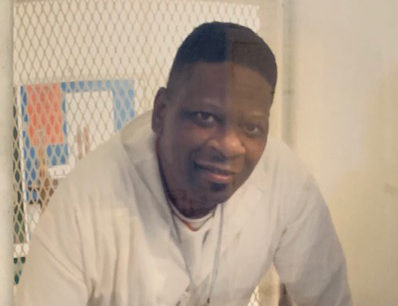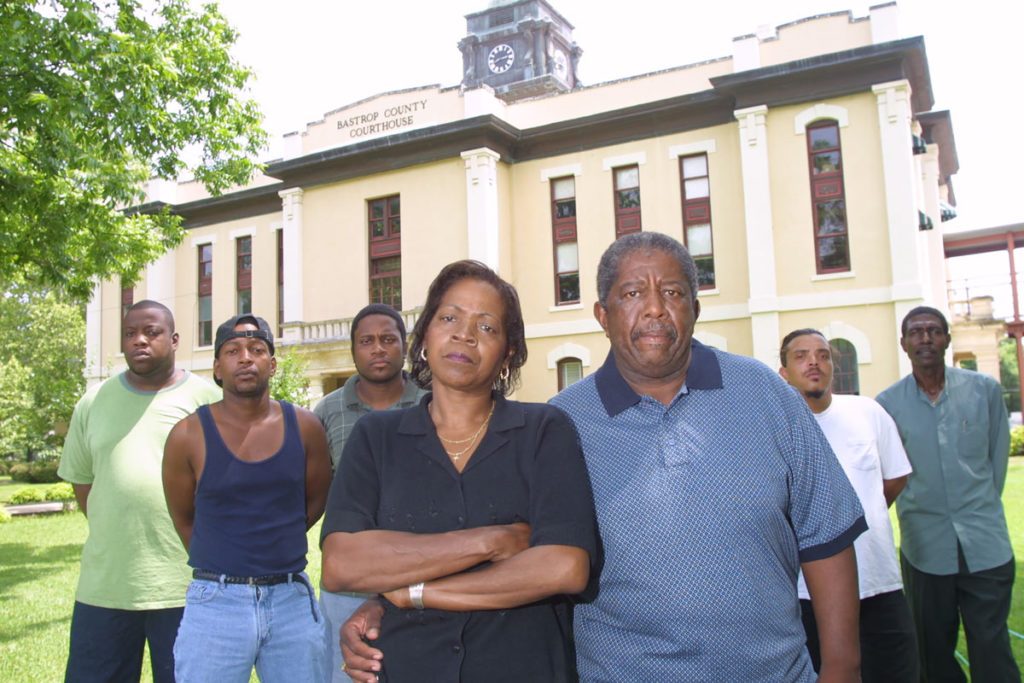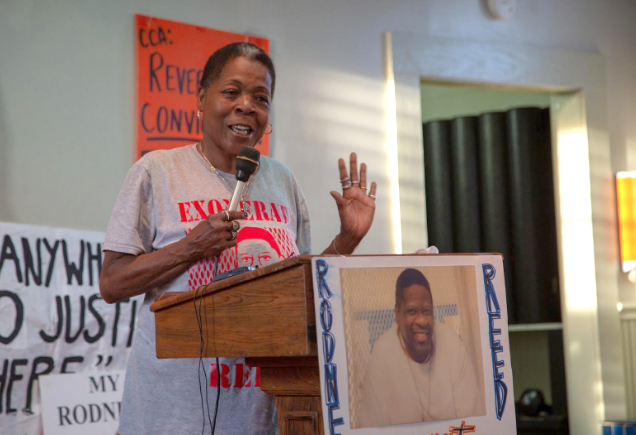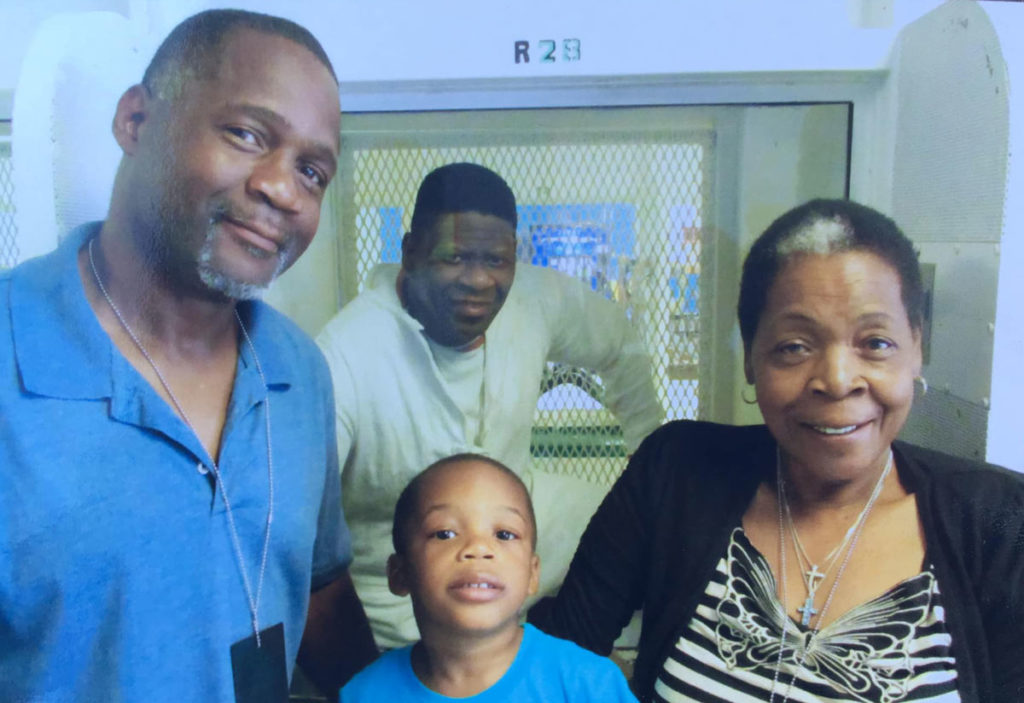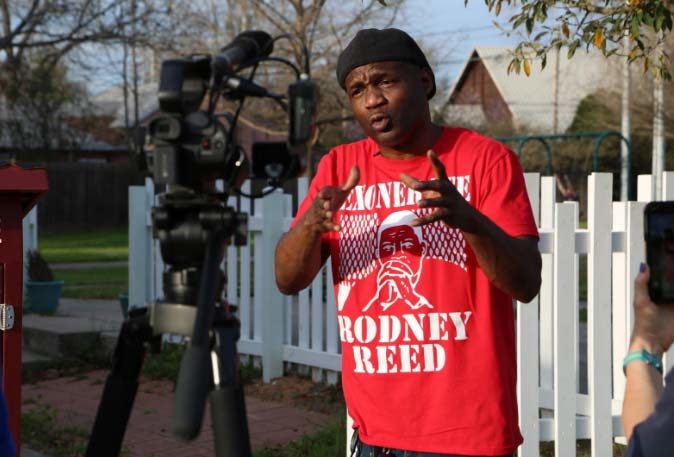The Texas Court of Criminal Appeals granted Rodney Reed an indefinite stay of execution on November 15, just five days before he was scheduled to be executed.
Cover Photo: Rodney Reed in Allan B. Polunsky Unit, West Livingston, Texas in 2015. Photo by Massoud Hayoun/Al Jazeera.
Cover Photo: Rodney Reed in Allan B. Polunsky Unit, West Livingston, Texas in 2015. Photo by Massoud Hayoun/Al Jazeera.
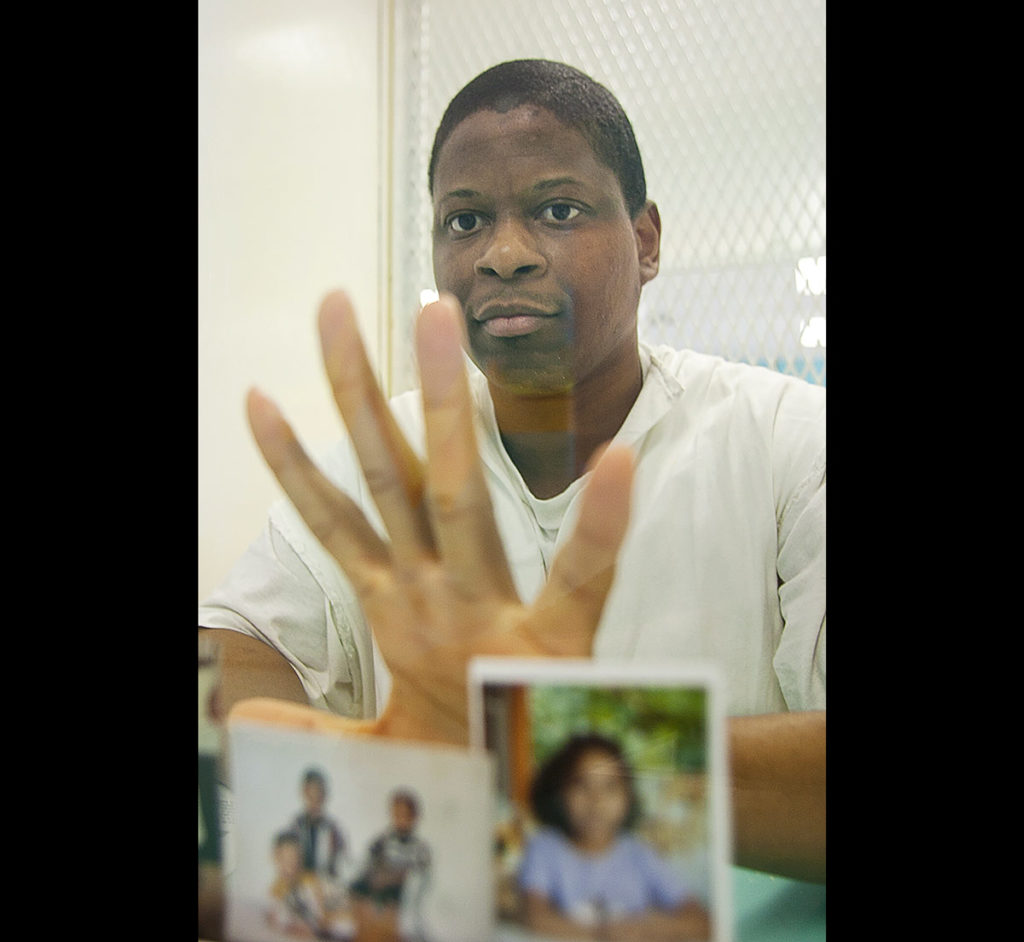
Rodney Reed in Allan B. Polunsky Unit, West Livingston, Texas in 2014. Photo by Jana Birchum/Austin Chronicle.
Rodney Reed in Allan B. Polunsky Unit, West Livingston, Texas in 2014. Photo by Jana Birchum/Austin Chronicle.
Rodney was wrongfully convicted in 1998 for the murder of Stacey Stites in Bastrop, Texas. But he now has another chance to prove his innocence.
In the coming months, new witnesses will testify on Rodney’s behalf during a week-long hearing and new, mounting evidence that points to his innocence and implicates the murder victim’s fiancé, Jimmy Fennell, will be presented.
People across the country called for justice for Rodney.

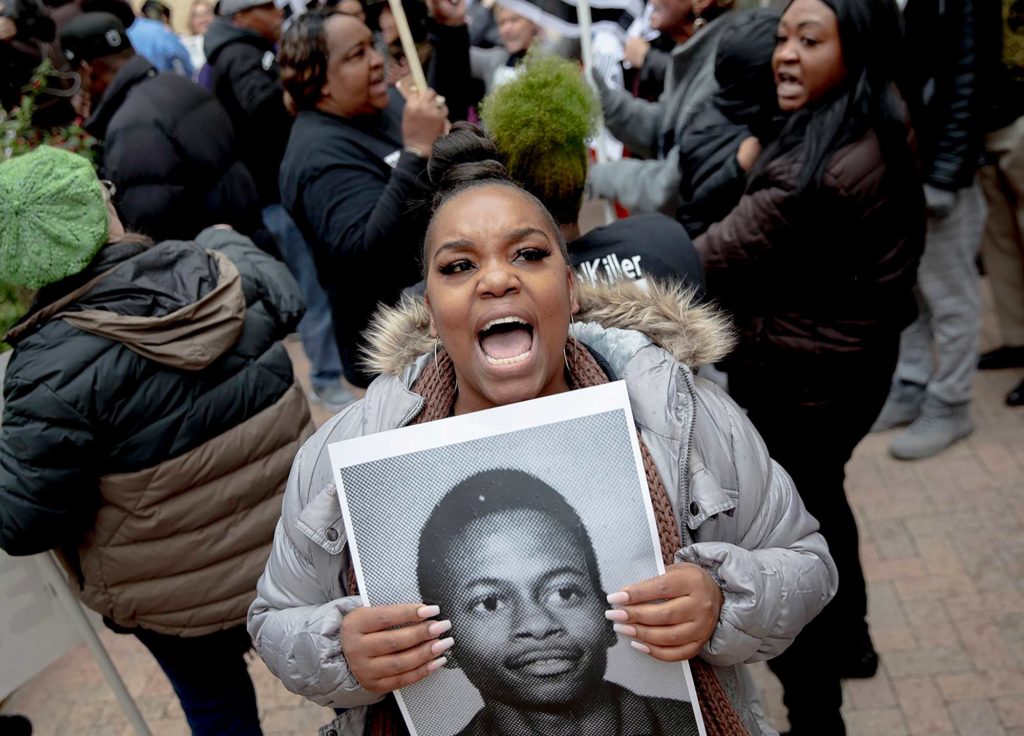
But the fight’s not over. Rodney still needs your support.
Brittani Smith chants during a protest against the execution of Rodney Reed on November 13, 2019, in Bastrop, Texas. Protesters also rallied in support of Rodney in Austin and San Francisco. Photo Nick Wagner/Austin American-Statesman via AP.
Brittani Smith chants during a protest against the execution of Rodney Reed on November 13, 2019, in Bastrop, Texas. Protesters also rallied in support of Rodney in Austin and San Francisco. Photo Nick Wagner/Austin American-Statesman via AP.
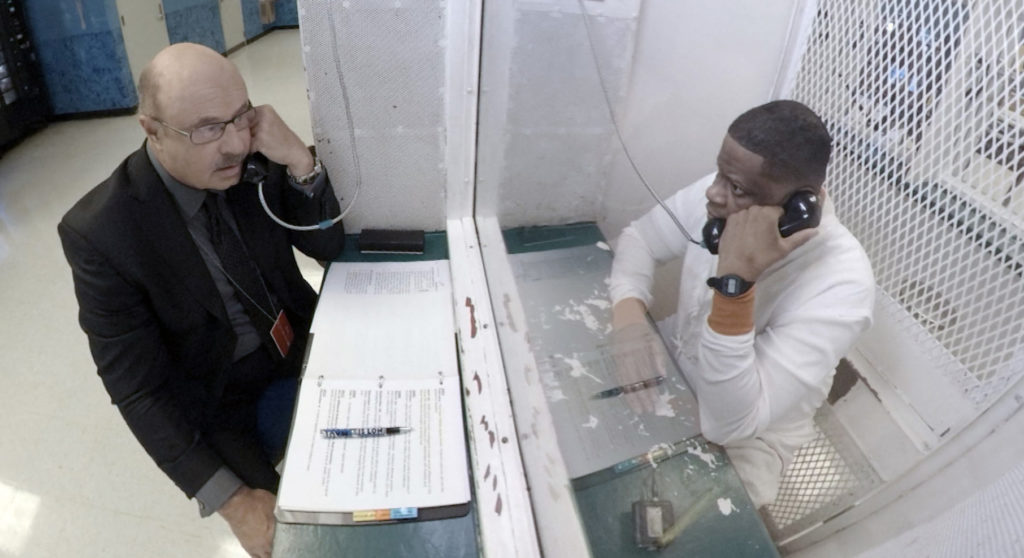
Despite being granted a stay of execution, Rodney remains confined to a 60-square-foot cell for 23 hours a day with only a small slit for a window. He has not been able to embrace his family in more than 22 years.
Screenshot from Dr. Phil’s visit and interview with Rodney Reed at Allan B. Polunsky Unit in West Livingston, Texas, September 2019.
Screenshot from Dr. Phil’s visit and interview with Rodney Reed at Allan B. Polunsky Unit in West Livingston, Texas, September 2019.
But before he was wrongfully convicted, Rodney was a son, brother, and father. He was a person with dreams. Here’s what you need to know about Rodney.
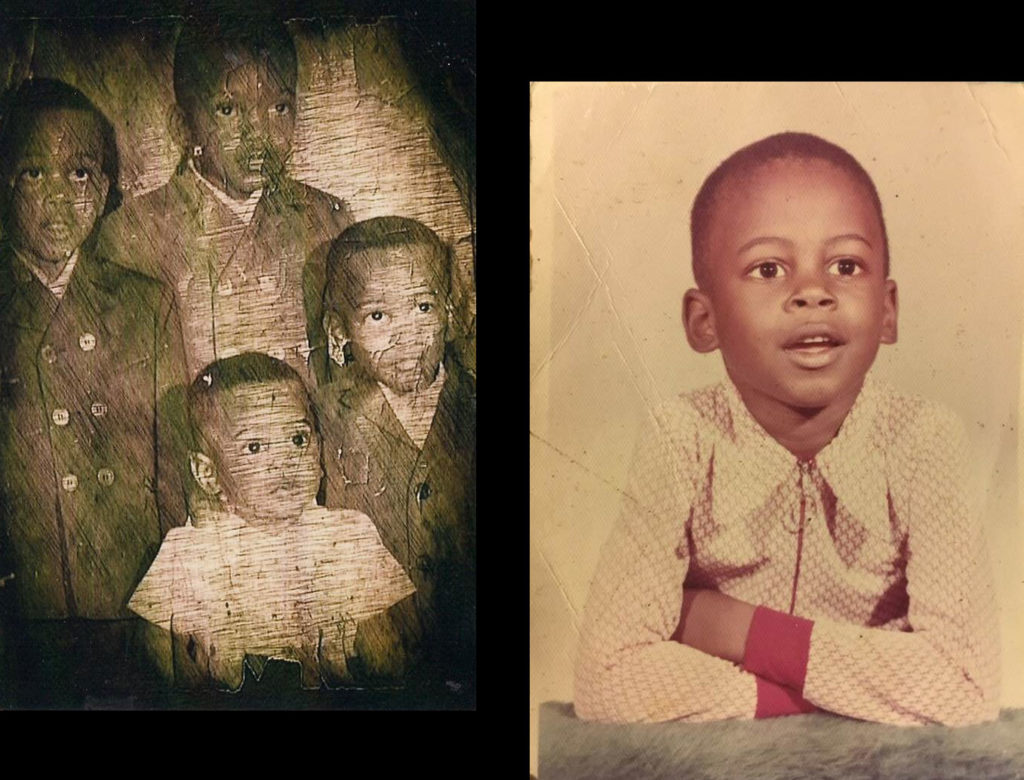
Brothers Rodney, age 2, in white, Ronald, Robert and Richard and a portrait of Rodney, age 4. Photos courtesy of the Reed Justice Initiative.
Rodney Rodell Reed was born in California on December 22, 1967, to Sandra, a nurse, and Walter, a member of the U.S. Air Force.
Brothers Rodney, age 2, in white, Ronald, Robert and Richard and a portrait of Rodney, age 4. Photos courtesy of the Reed Justice Initiative.

In high school, Rodney was on the football team, but had dreams of becoming a professional boxer.
Rodney, number 41, on the Hirschi High School football team in Wichita Falls, Texas. Photo courtesy of the Reed Justice Initiative.
Rodney, number 41, on the Hirschi High School football team in Wichita Falls, Texas. Photo courtesy of the Reed Justice Initiative.

Rodney’s high school senior portrait, age 18. Photo courtesy of the Reed Justice Initiative.
Rodney’s high school senior portrait, age 18. Photo courtesy of the Reed Justice Initiative.
Rodney’s dreams of becoming a boxer were not realized. In the early 1990s he moved to Bastrop, Texas and life took a turn for the worse.
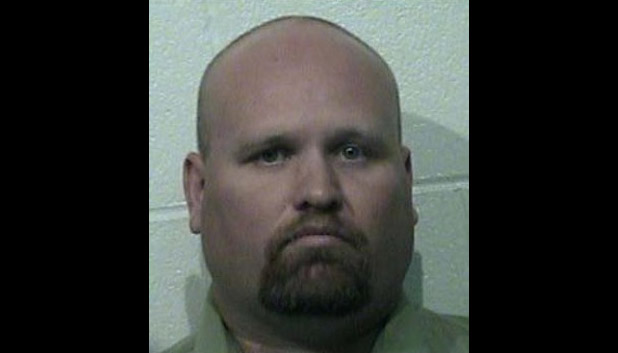
In 1996, Stacey Stites was murdered in Bastrop and investigators aggressively interrogated her fiancé Jimmy Fennell, a local police officer. Jimmy was found to be deceptive on multiple polygraph tests.
Jimmy Fennell. Photo by Georgetown, Texas Police Department.
Jimmy Fennell. Photo by Georgetown, Texas Police Department.
Nearly a year later, a small amount of Rodney’s semen was found in Stacey’s body, which led investigators to connect him to the crime.

Rodney maintained that he did not kill Stacey, with whom he’d had a private, consensual relationship.
Rodney in his early 20s. Photo courtesy of the Reed Justice Initiative.
Rodney in his early 20s. Photo courtesy of the Reed Justice Initiative.
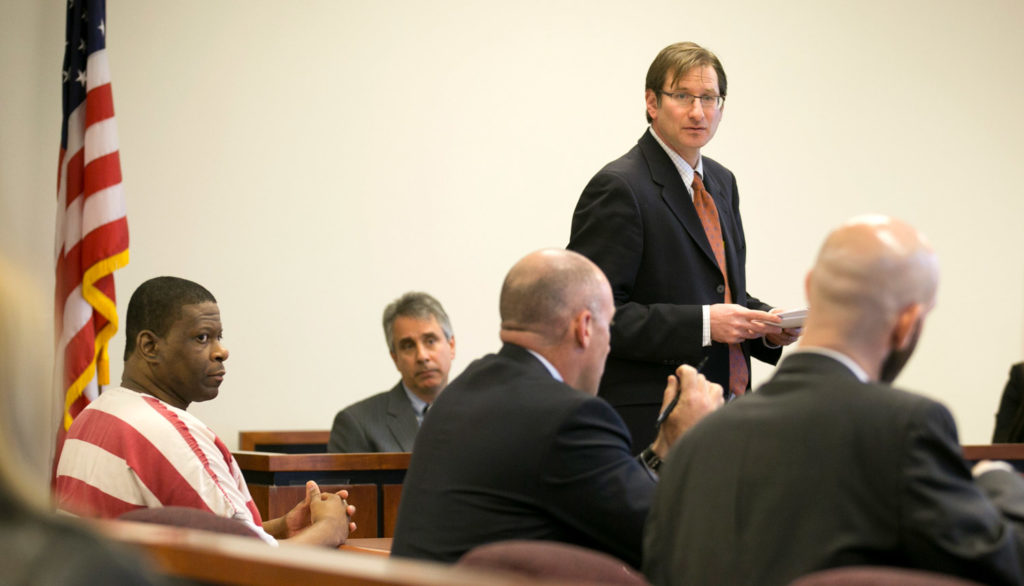
Rodney Reed, left, and his attorney Bryce Benjet speaking at a hearing in Bastrop County in 2014. Photo by Jay Janner/Austin American-Statesman via AP.
But in 1998, Rodney was convicted and sentenced to death. The decision was based almost entirely on expert opinion that falsely claimed that the semen found in Stacey’s body had to have been from a sexual encounter that occurred at or around the same time as the murder, thus implicating Rodney in her death. However, this testimony was false and the evidence is actually more consistent with Rodney’s account of a consensual encounter the day before Stacey’s disappearance.
Rodney Reed, left, and his attorney Bryce Benjet speaking at a hearing in Bastrop County in 2014. Photo by Jay Janner/Austin American-Statesman via AP.
Three renowned forensic pathologists, including Dr. Michael Baden, have described the State’s theory of Rodney’s guilt as both “medically and scientifically impossible.”

The cover of the Bastrop Advertiser on May 30, 1998.
The cover of the Bastrop Advertiser on May 30, 1998.
Additional affidavits affirm Rodney and Stacey’s relationship, undermine Jimmy’s account of his whereabouts during her final hours, and illustrate an extensive pattern of Jimmy’s threatening behavior and incriminating statements regarding the murder.
On October 29, 2019, Arthur Snow, a former member of the Aryan Brotherhood and Jimmy’s prisonmate, disclosed a conversation in which Jimmy confessed to him:
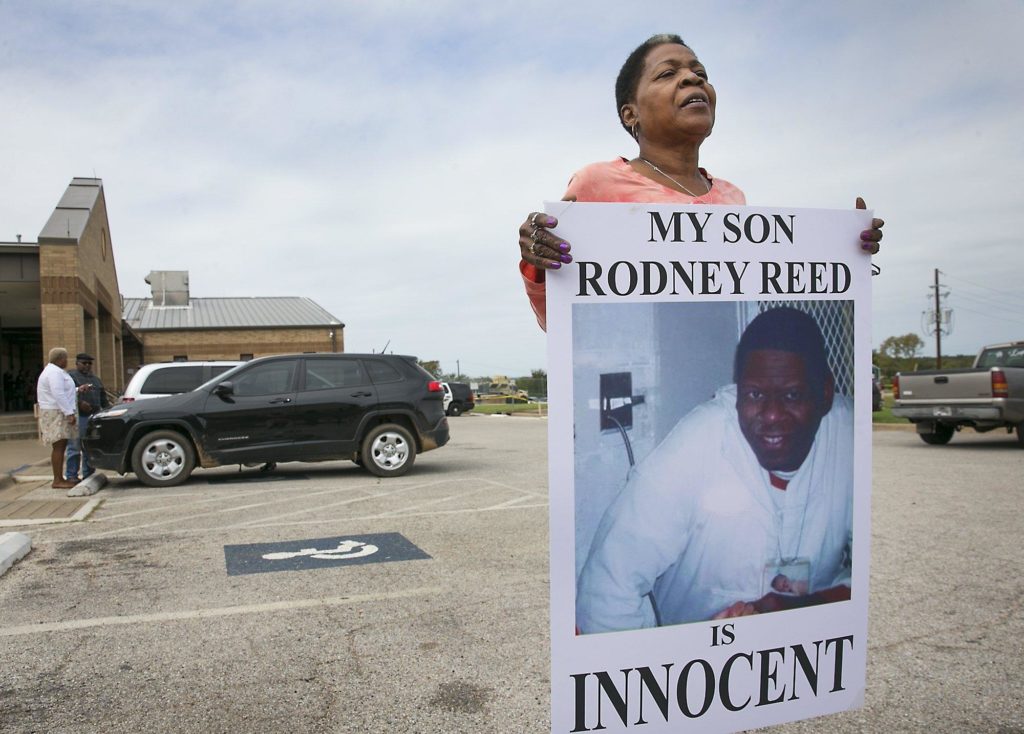
Sandra Reed, mother of Rodney, in 2017. Photo by Ralph Barrera / Austin American-Statesman via AP.
Sandra Reed, mother of Rodney, in 2017. Photo by Ralph Barrera / Austin American-Statesman via AP.

Rodney remains focused on proving his innocence with the help of the loyal supporters who have stood with him and his family over his 22 years on death row.
Reed family and supporters at a rally in Bastrop, Texas in July 2019. Photo courtesy of the Reed Justice Initiative.
Reed family and supporters at a rally in Bastrop, Texas in July 2019. Photo courtesy of the Reed Justice Initiative.
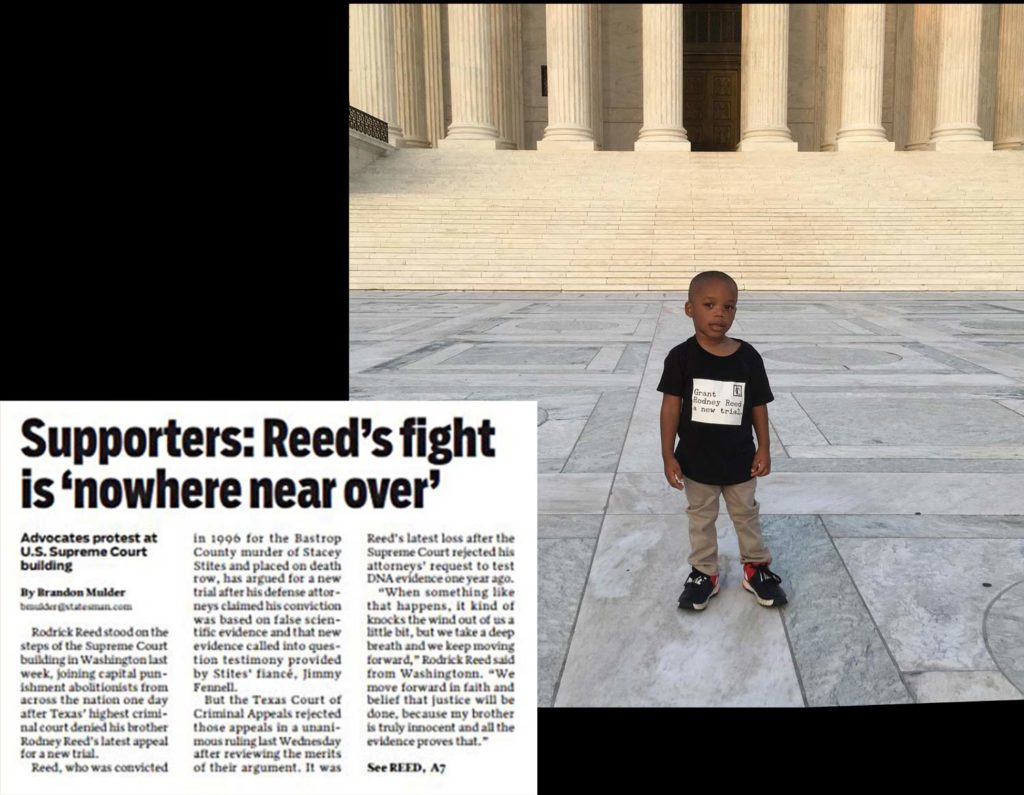
Rodney’s nephew, Rodrick Jr. demonstrating for Rodney’s case on the steps of the U.S. Supreme Court in June 2019. Photo courtesy of the Reed Justice Initiative.
Rodney’s nephew, Rodrick Jr. demonstrating for Rodney’s case on the steps of the U.S. Supreme Court in June 2019. Photo courtesy of the Reed Justice Initiative.
